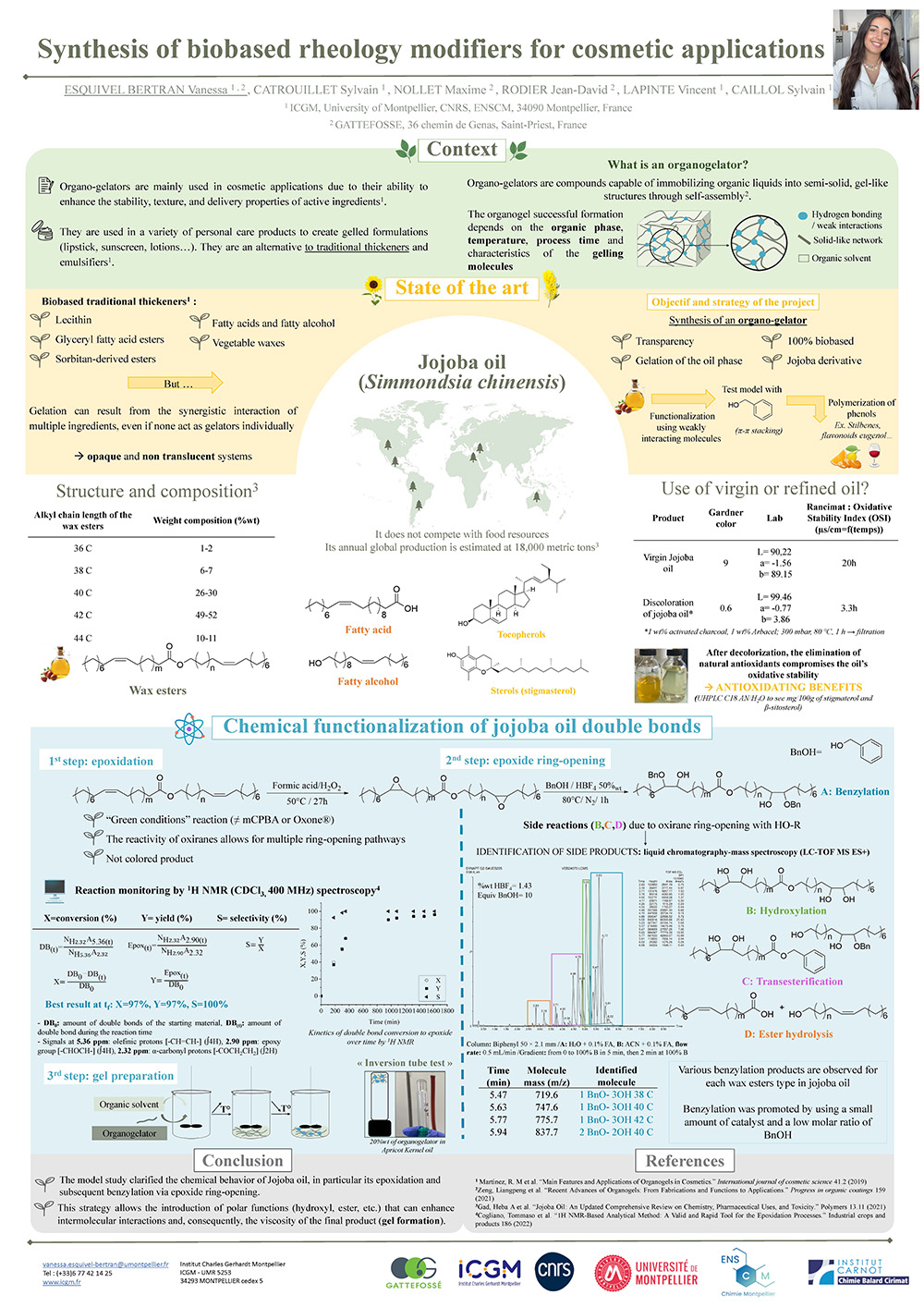As part of a collaboration between Gattefossé and the Charles Gerhardt Institute in Montpellier (ICGM), gelled or thickened formulations for cosmetic uses are developed from biosourced texturizing agents. Jojoba oil was selected as the starting lipid due to its wide availability, oxidative stability, and non-competition with food uses.
The unsaturated structure of Jojoba oil offers numerous possibilities for chemical functionalization, enabling the modulation of viscosity through the introduction of groups capable of weak interactions (hydrogen bonds, π-π interactions, Van der Waals forces, etc.), thus contributing to the formation of networks that structure the oily phases [1].
The first chemical modification undertaken involved the epoxidation of the unsaturations, followed by the ring-opening of the epoxy using various nucleophilic reagents [2]. This strategy allows the introduction of polar functions (hydroxyl, ester, etc.) that can enhance intermolecular interactions and, consequently, the viscosity of the final product.
The resulting products were characterized by 1H Nuclear Magnetic Resonance (NMR) and Liquid Chromatography-Mass Spectrometry (LC-MS). These analyses identified, in addition to the expected products, several side reactions such as hydrolysis, transesterification, and hydroxylation. These observations led to the fine optimization of experimental conditions, including the mass percentage of acid catalyst, alcohol equivalents, solvent choice, and temperature conditions.
This preliminary study provided a comprehensive understanding of the chemical transformations applied to Jojoba oil, thereby laying the foundation for the future development of biosourced organogels for cosmetic applications.
